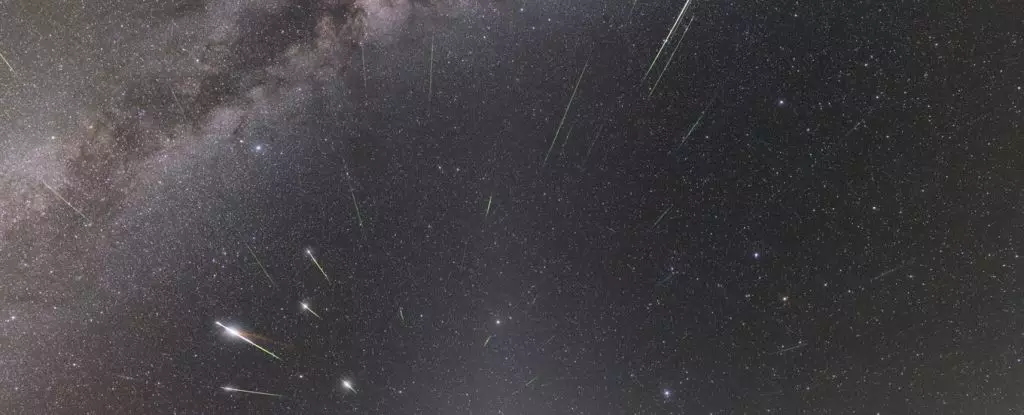As the clock ticks toward May 5 and 6, stargazers around the globe should prepare themselves for an extraordinary spectacle: the Eta Aquariid meteor shower. This annual cosmic event, a shower of meteors originating from the dust trail of Halley’s Comet, offers a remarkable opportunity for both amateur and seasoned astronomers to witness nature’s stellar display. What could be more exhilarating than reclining under the starry expanse and watching celestial bodies slice through the sky, igniting trails of luminescence?
Prime viewing conditions will emerge as the night sky transforms into a canvas of natural wonder. For those residing in the southern tropics, the Eta Aquariids serve up their greatest performance. Imagine a cosmic rainstorm where up to 60 meteors per hour scatter across the heavens, illuminating the darkness with their ephemeral beauty. Viewers in the Northern Hemisphere can also partake, though they might be treated to a less extravagant show of about 30 meteors in the magical minutes just before dawn.
Understanding the Origins of the Eta Aquariids
It’s essential to grasp the origin of the phenomena we observe. The Eta Aquariids are not merely whimsical fireworks of the universe, but rather the remnants of cometary debris left in the wake of 1P/Halley, commonly known as Halley’s Comet. This comet circles the Sun every 76 years, leaving behind a trail of particles that become striking meteor showers when Earth passes through them. As our planet journeys along its celestial path, these particles enter our atmosphere at staggering speeds, igniting a fiery trail that captivates all who take the time to glance upward. The radiant point of this meteor shower, located near the constellation Aquarius, offers a fantastic backdrop for an extraordinary celestial occurrence.
The Art and Science of Timed Observations
For anyone looking to optimize their meteor-watching experience, location and timing are key. The radiant point of the shower rises in the eastern sky, and while it may be tempting to watch from your backyard, finding a clear, less light-polluted area can greatly enhance visibility. Moreover, meteor activity is not confined to a singular moment; the best viewing will extend well beyond the peak days. Although the height of the shower will occur around May 6, the nights leading to and following the peak are likely to still present opportunities to witness meteoric displays.
With the Moon at 64 percent illumination, it will initially seem to obstruct visibility. Fortunately, it will set well before the radiant ascends, offering a perfect dark sky to observe the meteors. Equipped with the right knowledge, one can prepare appropriately by checking local weather conditions and planning viewing sessions. There are numerous tools available, such as meteor shower calendars provided by the International Meteor Organization, which can keep enthusiasts informed of the year’s celestial calendar.
Participating in the Celestial Community
A quintessential aspect of meteor-watching goes beyond mere observation; it incorporates shared experiences and communal celebrations of the night sky. Consider gathering a group of friends or family to revel in a night of star-gazing. Bring blankets, snacks, or even artistic tools to sketch the beauty you see. This shared experience can ignite not only a sense of awe but also an appreciation for the magical universe around us.
The event encourages collective wonder and an enriched engagement with astronomy. Online, social platforms often buzz with real-time updates during meteor showers, allowing people all over the world to share their views of shooting stars, enhancing the sense of global fellowship.
Why We Should Embrace These Cosmic Events
In our increasingly fast-paced and digitally-driven lives, moments like the Eta Aquariid meteor shower serve as vital reminders of the vastness beyond our routine existence. Immersing oneself in the night sky can facilitate a recalibration—binding us to nature and the cosmos, ultimately shifting our perspectives. Whether seen through the eyes of a child marveling at the stars or an adult reflecting on the wonders of the universe, every meteor carries the potential for inspiration, instilling curiosity and wonder within us all.
So, let the skies be your guide this May. Lay back, breathe deeply, and lose yourself in the temporal glow of shooting stars as they dazzle across the sky.


Leave a Reply